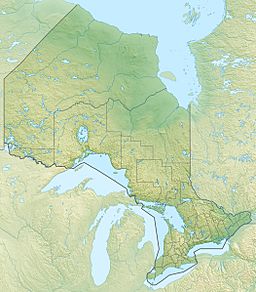Cat Lake (Ontario) facts for kids
Quick facts for kids Cat Lake |
|
|---|---|
| Location | Kenora District, Ontario |
| Coordinates | 51°42′02″N 91°50′53″W / 51.70056°N 91.84806°W |
| Type | Lake |
| Part of | James Bay drainage basin |
| Primary outflows | Cat River |
| Basin countries | Canada |
Cat Lake is a beautiful lake located in the Kenora District of Northwestern Ontario, Canada. It's an important natural feature in the region, known for being the starting point of a significant river.
Contents
Exploring Cat Lake
Cat Lake is more than just a body of water; it's a key part of the local environment. Lakes like Cat Lake are often formed by glaciers that moved across the land thousands of years ago. They leave behind depressions that fill with water, creating the many lakes found in places like Ontario.
Where is Cat Lake Located?
Cat Lake is found in the large Kenora District, which is in the northwestern part of Ontario. This area of Canada is famous for its vast forests, many lakes, and rich wildlife. The lake's exact location can be pinpointed using special coordinates, which help scientists and explorers find it on a map.
The Cat River and Beyond
One of the most important facts about Cat Lake is that it is the source of the Cat River. This means the Cat River begins its journey right here, flowing out of the lake. Rivers like the Cat River are vital for the environment. They carry water, nutrients, and even help shape the land as they flow towards larger bodies of water. The Cat River eventually joins other rivers and flows into the James Bay drainage basin, which is a huge area where all the water eventually drains into James Bay.
The Cat Lake First Nation Community
On the central north shore of Cat Lake, you will find the community of the Cat Lake First Nation. This Indigenous community has a deep connection to the land and the lake, which has been their home for a very long time. The community is also served by the Cat Lake Airport, which helps connect them to other parts of Ontario and Canada. This airport is especially important because it allows people and supplies to travel in and out of the remote community.


